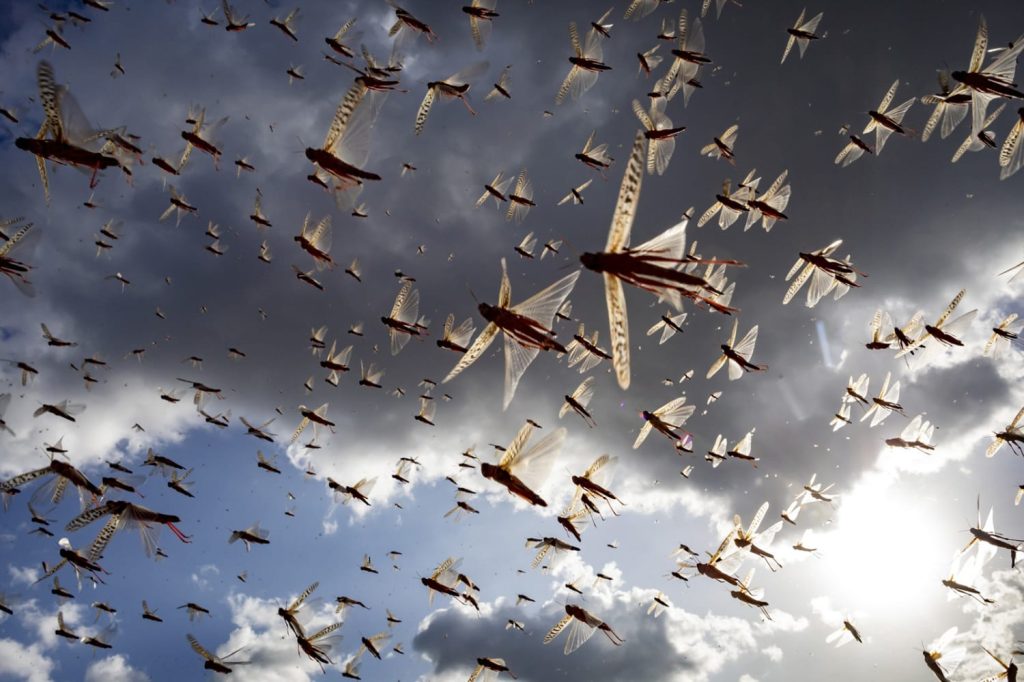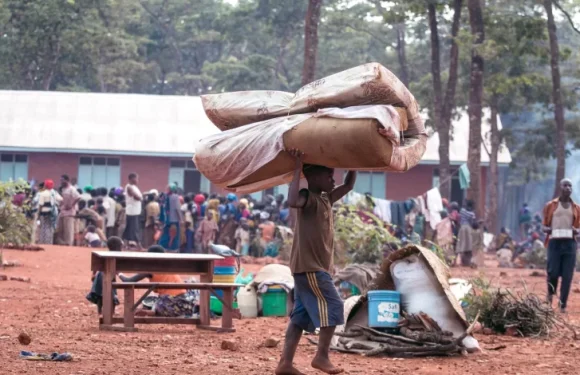
The Inter-Governmental Authority on Development member states are designing policies and pre-emptive measures against desert locust invasion that caught them unawares between 2019 and 2022.
The eight Igad member states comprising Djibouti, Eritrea, Ethiopia, Kenya, Somalia, South Sudan, Sudan and Uganda, came together in Nairobi on May 22 on ways of how to prepare for future invasion
The three-year desert locust invasion between 2019 and 2022 caught the eastern African region off-guard, especially for Kenya which had not experienced the phenomenon for 70 years.
The region was caught off-guard as millions of the wind-assisted swarm of locusts swept the region, causing damages to agricultural fields and pasture that amounted to about $8.5 million loss according to the World Bank.
Igad Executive Secretary Workneh Gebeyehu cited desert locusts, Quelea birds, fall armyworms, and African armyworms as among the persistent threats of transboundary pests that stand out.
“The frequent outbreaks of these pests, particularly the desert locusts, pose severe threats to agriculture across our region, worsening food insecurity and economic instability,” said Mr Gebeyehu
The meeting decided that Igad countries should acquire unmanned aerial vehicles (drones), satellite monitoring systems and digital data collection tools for transboundary pest surveillance, monitoring and control operations.
Promote the adoption of Integrated Pest Management (IPM), including use of bio-pesticides as an essential part of IPM strategy.
The purpose of the meeting was to discuss strategies for promoting cooperation and creating workable, long-term plans for managing and controlling transboundary pests like desert locusts and other pests to safeguard agricultural livelihoods and guarantee food security throughout the Igad region.
The meeting decided on a comprehensive data and information center for transboundary pests at the Desert Locust Control Organization for Eastern Africa (DLCO-EA).
Besides technology to control future invasion, the meeting decided to incorporate the rich indigenous knowledge found among communities within the Igad of member states to enhance regional collaboration for monitoring, early warning, and rapid response.
According to the Kenyan Cabinet Secretary for Agriculture, Mithika Linturi, the transboundary nature of these pests requires a united regional response. “It is essential that we coordinate our efforts to efficiently monitor, control, and mitigate their impact,” said Mr Linturi.
The outbreak was the worst to hit Kenya in 70 years, and the worst in 25 years for Ethiopia, Somalia, and India. With help from the winds, desert locusts can quickly travel long distances – sometimes moving more than 144km in a single day.
The swarms in Ethiopia, Kenya, and Somalia originally came from Yemen, and some have now travelled back to the Middle East and beyond. The swarms began forming in 2018 after cyclones dumped heavy rain on the inhospitable deserts of Arabia, allowing locusts to breed unseen in the wet sands.
Strong winds in 2019 blew the growing swarms into Yemen’s inaccessible conflict zones, then across the Red Sea into Somalia, Ethiopia, and Kenya.
This problem is often exacerbated by climate change, as occurrences such as El Niño foster favourable circumstances for the spread of pests. Our agricultural communities are finding it more and more difficult to plan and protect their livelihoods due to the unpredictable weather patterns brought on by climate change. This is resulting in crop failures, food shortages, and displacement.
The region responded through ground and air spraying campaign coordinated by the United Nations Food and Agriculture Organization (FAO). About 1.8 million litres of chemical pesticides were sprayed over 1.76 million hectares $118 million.
Through Fao’s support, Kenya was able to protect pastoralist livelihoods, averting a loss of 11,338 hectares of crop worth $3.4 million. But in 2020, another generation started forming swarms.
But the response came with consequences to the landscape as responders sought to find the elusive balance between eradicating the invading pests without destroying foliage and harming insects, wildlife, and humans.
Pesticides are not only very effective at killing locusts, but they also kill bees and other insects. They leach into water systems and can damage human health. Northern Kenya is renowned worldwide for its bee diversity, and farmers and conservationists worry that bees are becoming casualties.














